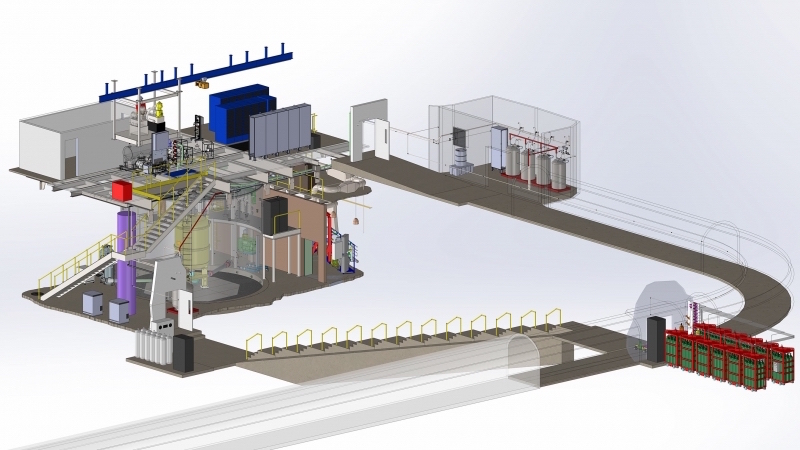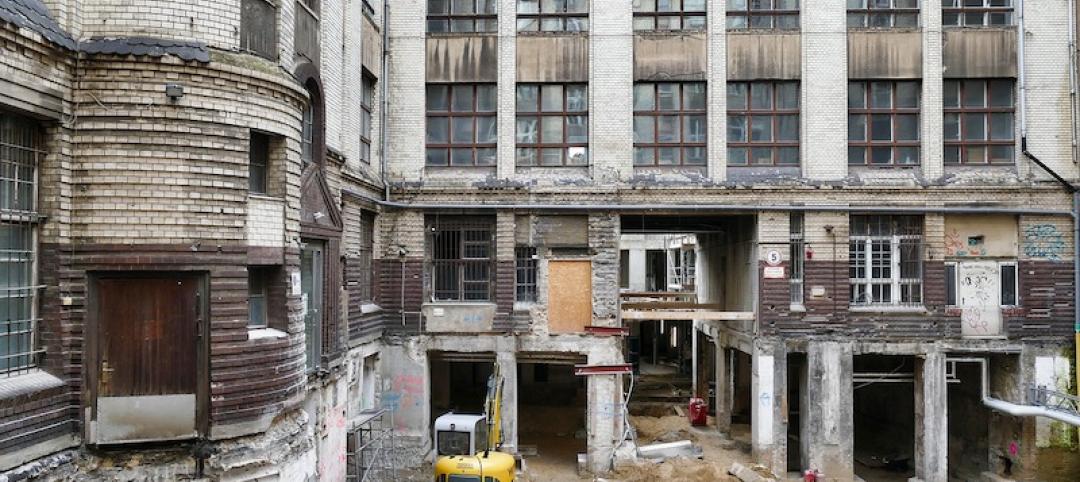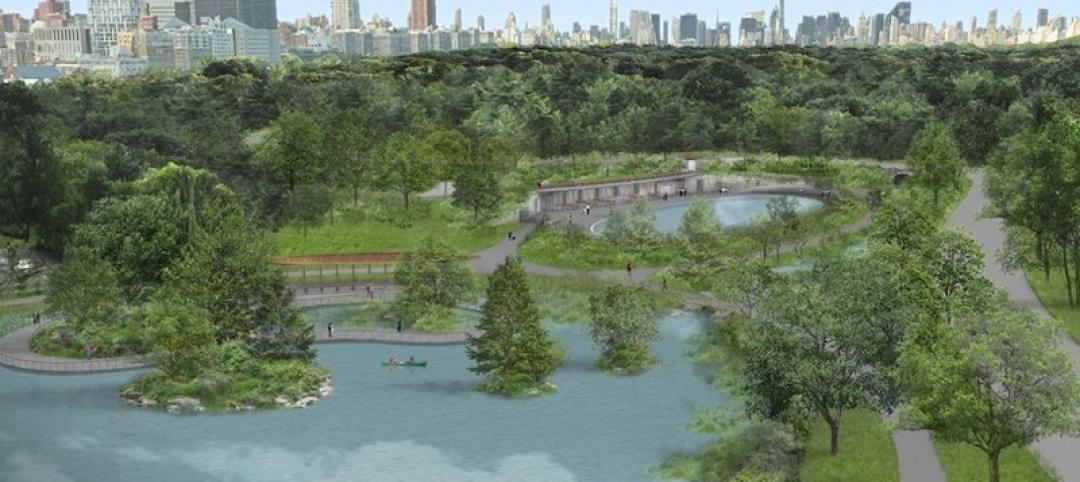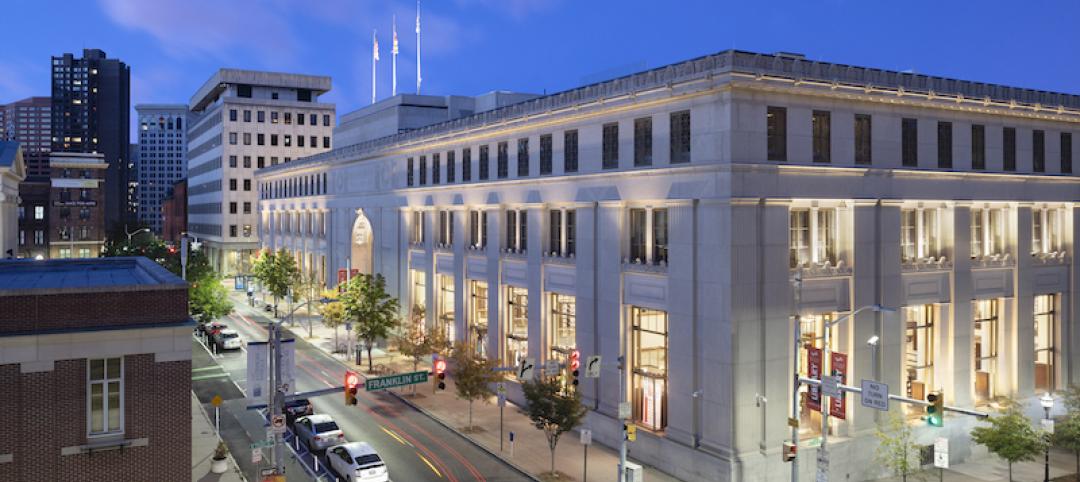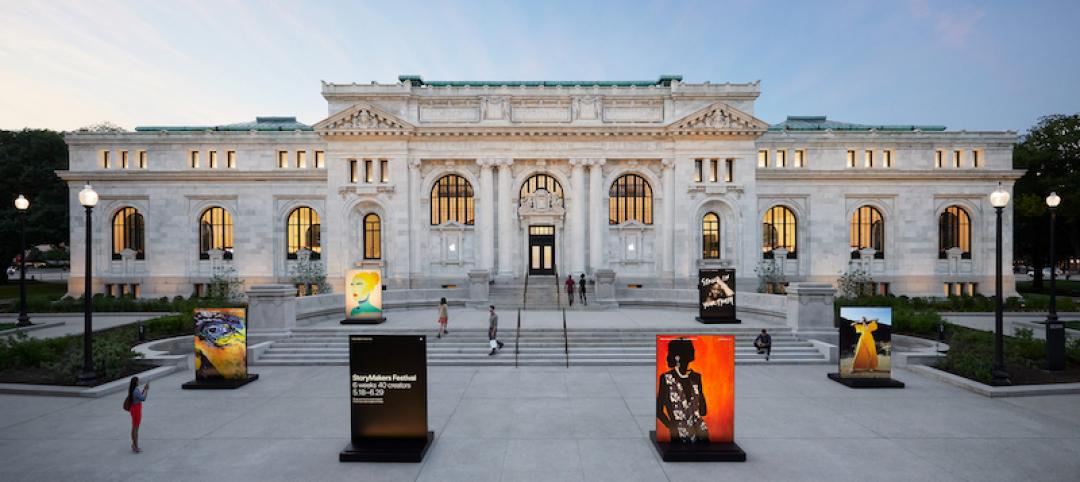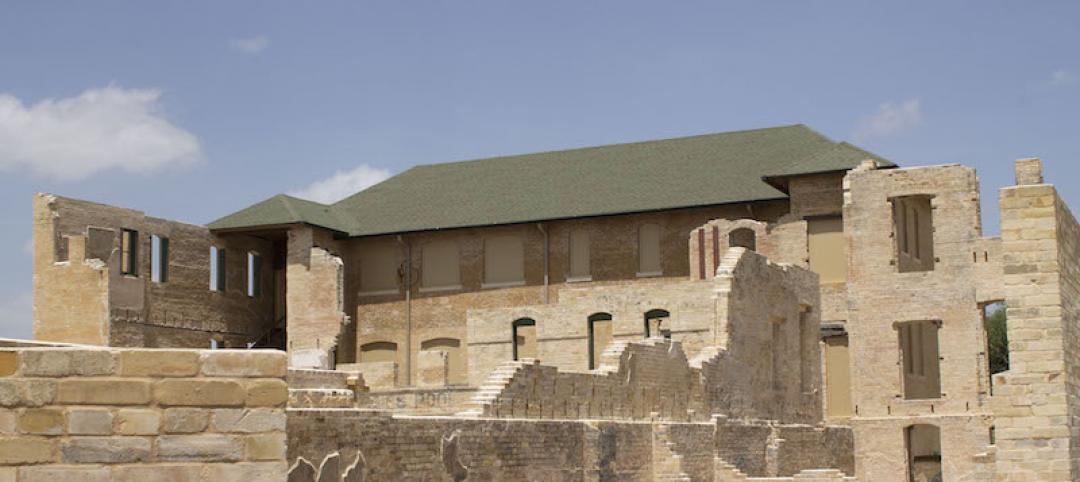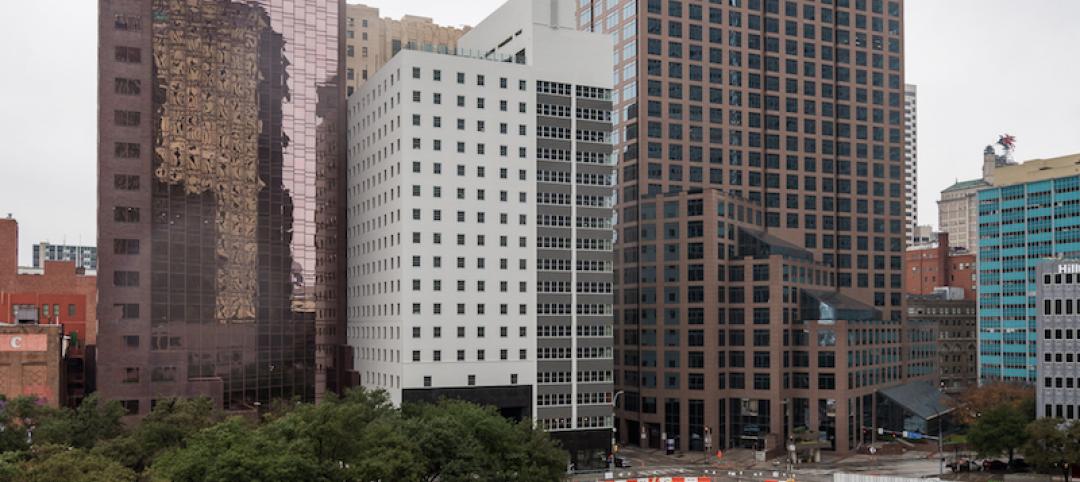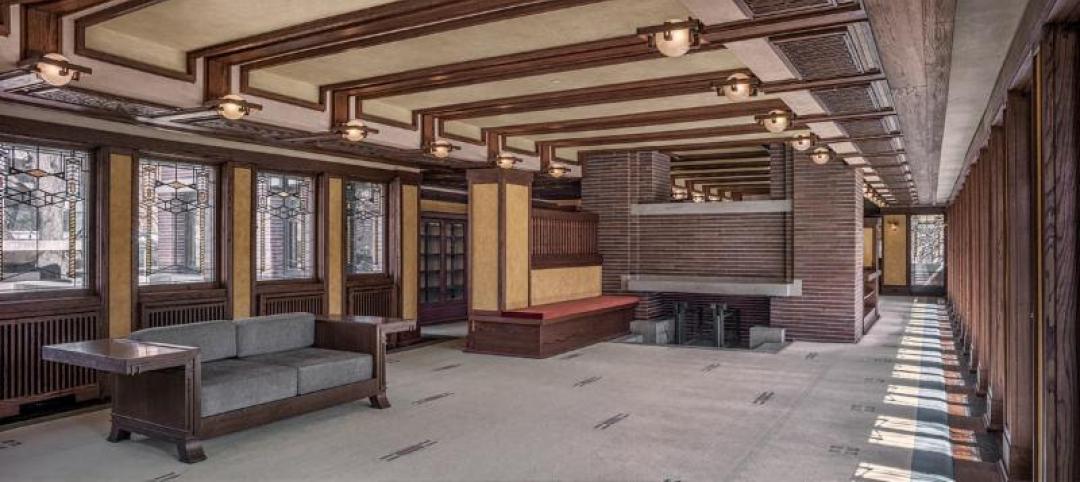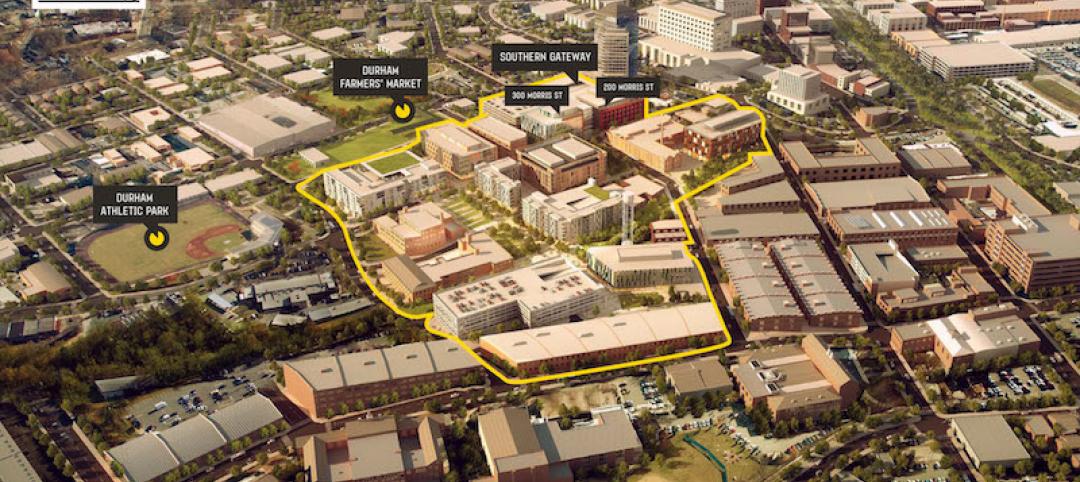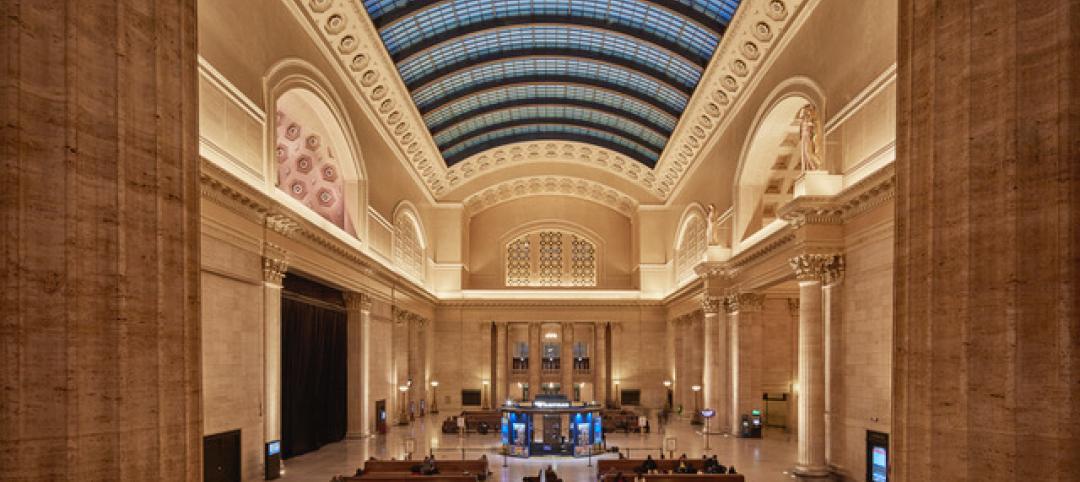In a former gold mine in Lead, S.D., an underground research facility is being renovated for a major experiment that, when completed in two years, would be the most sensitive dark-matter detector ever produced, capable of detecting collisions between galactic dark matter and regular matter within an unprecedented range.
Dark matter accounts for 85% of all matter. It affects the motion of galaxies, bends light, and influences the very structure of the universe. The LUX-ZEPLIN (LZ) experiment (which stands for Large Underground Xenon and ZonEd Proportional scintillation in Liquid Noble gases) will be conducted in the Davis Cavern at Sanford Underground Research Facility, or SURF, which is shielded from cosmic background radiation by nearly a mile of rock.
Architects and engineers with LEO A DALY designed the renovations to Davis Cavern at the same time as LZ’s team of 220 scientists finalized the design of the experimental apparatus itself. LZ holds 10 tons of liquid xenon, making it about 30 times larger and 100 times more sensitive than a previous LUX experiment that SURF conducted between 2012 and 2016.
“The level of coordination and flexibility required, in a tight underground space, with parameters constantly evolving, and with extraordinary safety and cleanliness considerations, made this one of the most challenging and exhilarating projects we’ve ever done,” said Steven Andersen, a senior architect and project manager with LEO A DALY in Minneapolis.
LZ was selected by the U.S. Department of Energy (DOE) and the U.S. National Science Foundation as one of the three G2 (for Generation 2) dark matter experiments. In February 2017, the project passed a DOE review and approval stage known as “Critical Decision 3,” which accepted the final design and formally launched construction.

When this renovation and new installations are completed in 2020, the LZ experiment will be 30 times larger and 100 times more sensitive than a previous dark-matter experiment that took place between 2012-2016. Image: SURF, courtesy of LEO A DALY
The experiment—which will take place on the Davis Campus that’s 4,850 feet below ground level—is a collaboration among scientists and engineers from 37 institutions in the U.S., United Kingdom, Portugal, Russia, and Korea. It is one of the few second-generation projects investigating the theory that dark matter is made up of weakly interactive massive particles (WIMPS). Direct detection of WIMPS would be a major discovery in this field.
John Keefner, underground operations engineer with SURF, said in a prepared statement that planning for this experiment started even before LUX was built. “We’re finally at the point where we can begin to refit the cavern and existing infrastructure to all for the installation of LZ.”
The renovation includes removing an existing cleanroom, tearing down a wall between two former low-background counting rooms, installing a new hoist system, building a work deck and modifying the water tank itself to accommodate the larger cryostat. A wall in the lower level of Davis Cavern will be removed to make way for four compressors that will be used for emergency xenon storage recovery. Other renovations include a radon reduction room and a xenon storage room.
This renovation work is being handled by Ainsworth Benning Construction, and will include updates to the cavern’s plumbing, electrical and ventilations systems, after which the scientists can begin installing the experiment itself. This work is complicated by the fact that on the other side of the cavern is the entrance to the Majorana Demonstrator Project, another sensitive experiment that requires an extremely clean environment.
Related Stories
Reconstruction & Renovation | Nov 6, 2019
The silent giant: Reconstruction sector makes big impact on firms
More than a quarter of AEC firms that participated in the 2019 Giants 300 survey earned at least half of their total 2018 revenue from the reconstruction sector.
Reconstruction & Renovation | Oct 7, 2019
Central Park’s Lasker Rink and Pool to undergo $150 million restoration project
The project will be the largest the Central Park Conservancy has ever undertaken.
Libraries | Sep 18, 2019
The $115 million renovation of Baltimore’s Enoch Pratt Free Library completes
Beyer Blinder Belle led the project.
Reconstruction & Renovation | Jun 5, 2019
The French Senate doesn’t want your Notre Dame restoration ideas
France’s Prime Minister Édouard Philippe originally wanted to hold an international competition to redesign the cathedral’s roof.
Reconstruction & Renovation | May 22, 2019
Foster + Partners converts historic D.C. library into an Apple store
The building was the city’s first public library.
Reconstruction & Renovation | Apr 24, 2019
Century-old hotel and bathhouse to be repurposed into a public park in San Antonio
Phase one of the project has recently completed.
Reconstruction & Renovation | Apr 5, 2019
Historic Corrigan Tower in Dallas becomes 1900 Pacific Residences
The 18-story Corrigan Tower in the Dallas’s historic downtown district is now a thriving 150-unit apartment residence community.
Reconstruction & Renovation | Mar 27, 2019
Interior restoration of Frank Lloyd Wright’s Frederick C. Robie House completes
The AIA designated the Robie House as one of the 10 most significant structures of the twentieth century.
Mixed-Use | Feb 21, 2019
An R&D-oriented innovation district is taking shape in the heart of Durham, N.C.
Its buildout has included converting old tobacco warehouses into offices and labs.
Reconstruction & Renovation | Feb 7, 2019
Restoration of Chicago’s Union Station Great Hall completes
Goettsch Partners designed the project.


